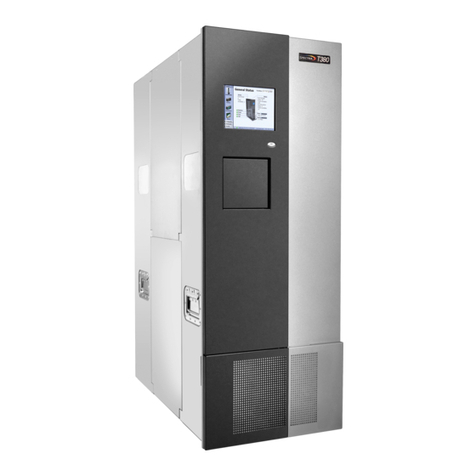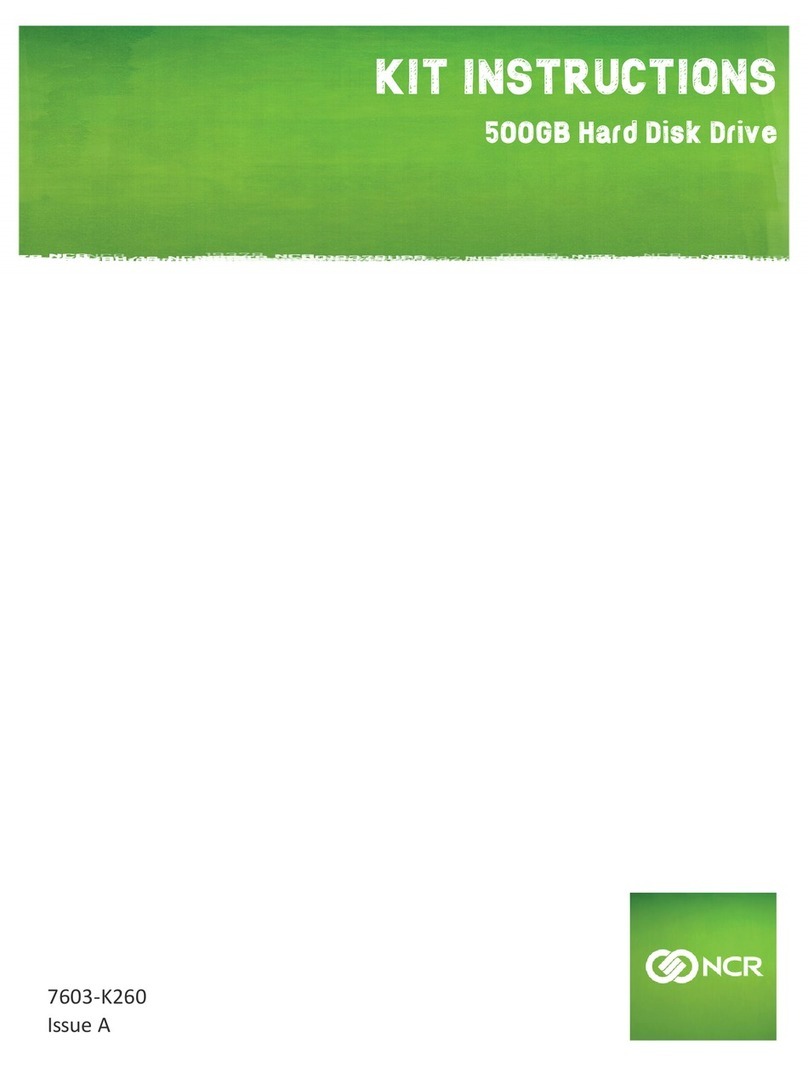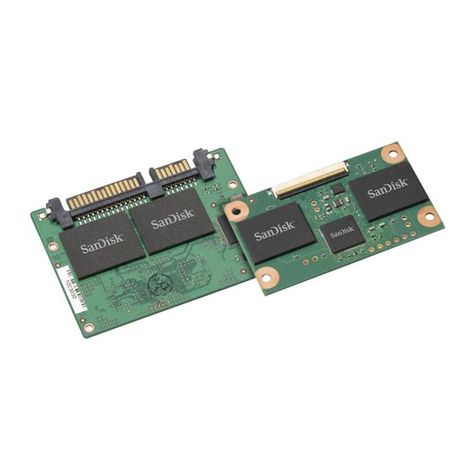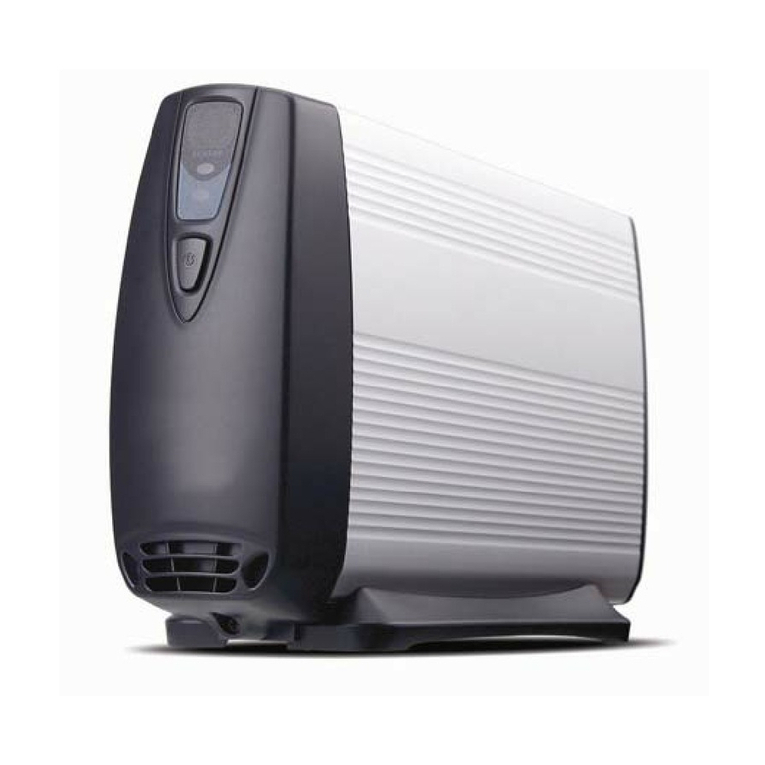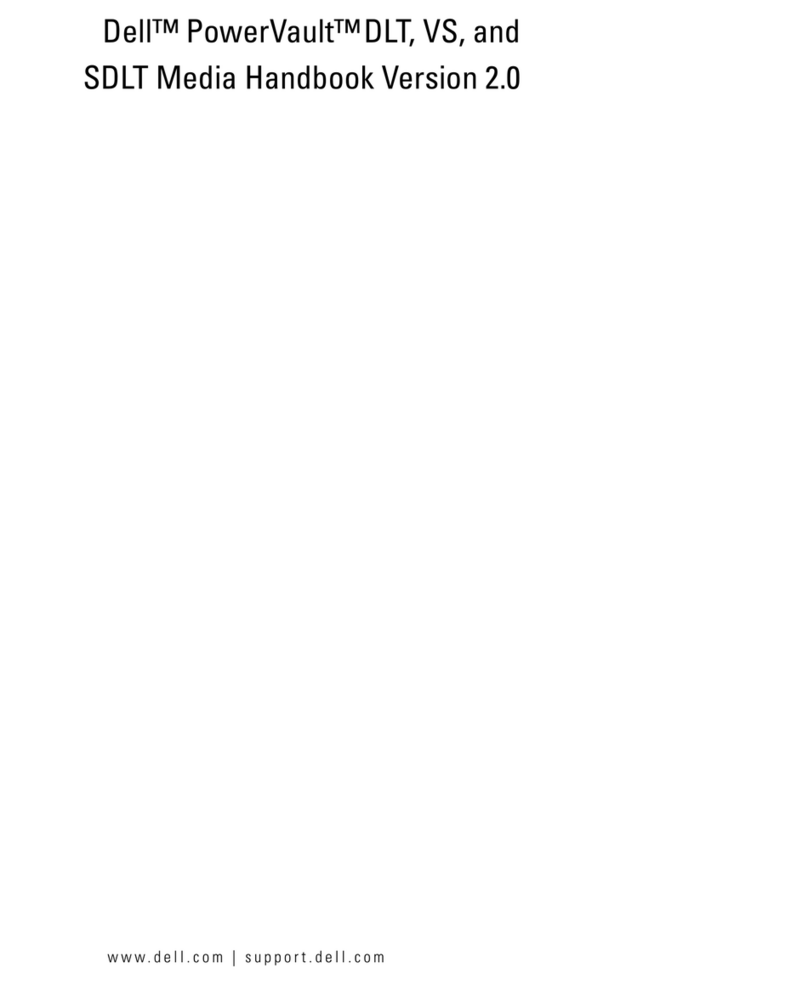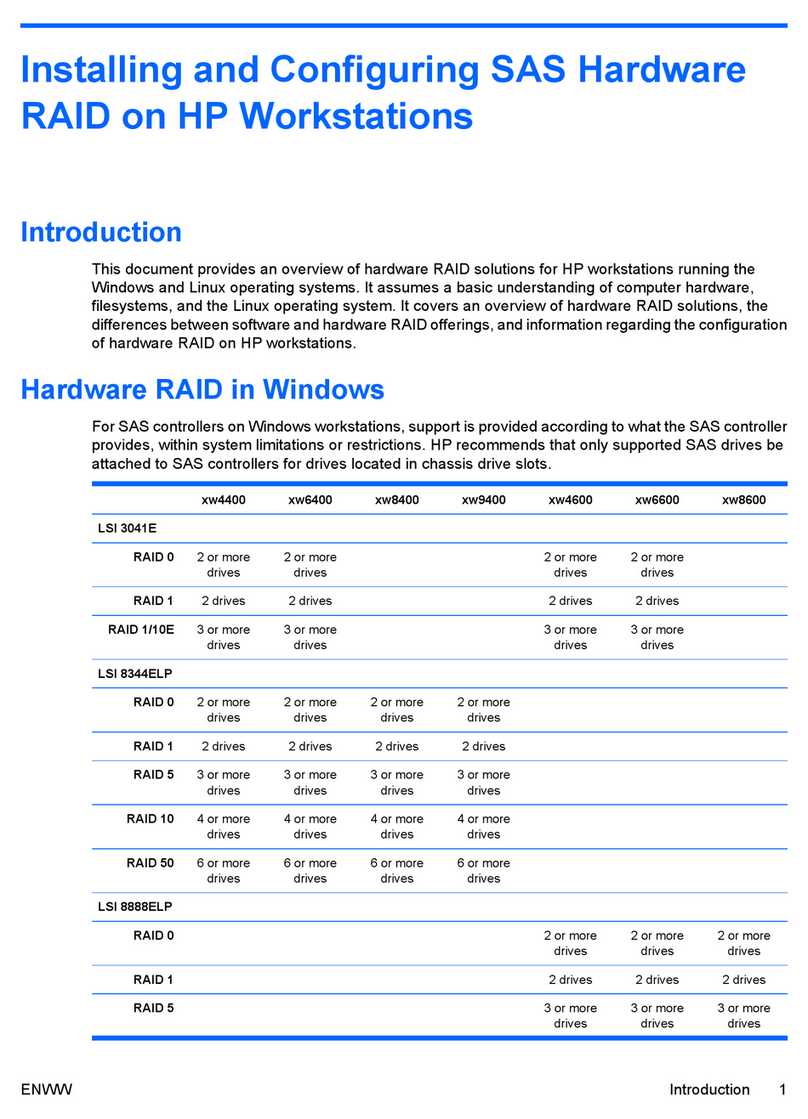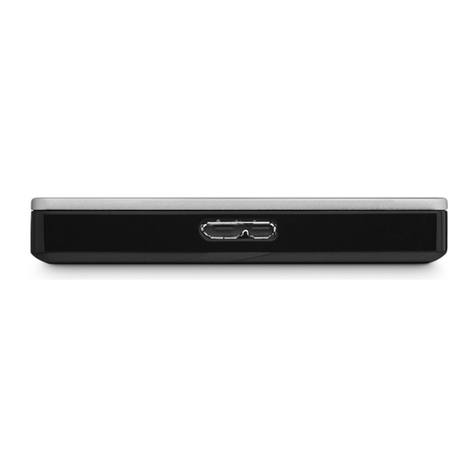Electronic Systems Support EFC52 SERIES User manual

EFC52/EFC54 SERIES
BATTERY CABINET
INSTALLATION, OPERATION, AND MAINTENANCE MANUAL
MNL-000700
Rev B
January 2017

This manual provides instructions regarding safety, storage, installation, operation and
maintenance. Failure to observe the precautions as presented may result in injury or loss of
life.
This document is proprietary to Electronic Systems Support (ESS). This document cannot
be copied or reproduced in whole or in part, nor can its contents be revealed in any manner
or to any person except to meet the purpose for which it was delivered, without the express
written permission of Electronic Systems Support.
Please visit ess.to to check for updates to manual.

MNL-000700
Rev B 1 www.ess.to
January 2017
TABLE OF CONTENTS
1. INTRODUCTION..................................................................................................................................2
2. PRECAUTIONS....................................................................................................................................2
3. INSPECTION UPON RECEIPT OF GOODS.......................................................................................3
3.1 General..................................................................................................................................3
3.2 Visible damage......................................................................................................................3
3.3 Concealed damage ...............................................................................................................3
3.4 Return of damaged goods.....................................................................................................3
4. SYSTEM OVERVIEW ..........................................................................................................................3
5. GENERAL SYSTEM SPECIFICATIONS…………………….................................................................4
5.1 DC Output Characteristics.....................................................................................................4
5.2 Batteries.................................................................................................................................4
5.3 Grounding………………………………………………………………………… ........................4
5.4 Environmental Conditions......................................................................................................4
•Cabinet Dimensions..................................................................................................................4
•Cabinet Weights (Assembled) ..................................................................................................5
6. INSTALLATION PROCEDURES..........................................................................................................5
6.1 Preparation............................................................................................................................5
6.1.1 Necessary Equipment and Tools ..........................................................................5
6.1.2 Equipment Inspection............................................................................................5
6.1.3 Safety Precautions ................................................................................................6
7. INSTALLATION STEPS.......................................................................................................................6
7.1 Cabinet Location....................................................................................................................6
7.2 Cabinet Mounting ..................................................................................................................6
7.3 DC Connections ....................................................................................................................7
7.4 Grounding..............................................................................................................................7
7.5 System Operation..................................................................................................................7
8. SYSTEM MAINTENANCE....................................................................................................................8
8.1 Blown Fuse Replacement......................................................................................................8
8.2 Battery Replacement Steps...................................................................................................8
9. WARRANTY RELATED MAINTENANCE
10. DRAWINGS/SCHEMATICS...............................................................................................................10
•General Cabinet Drawing..........................................................................................................10
•Anchor Specifications ...............................................................................................................11
•Anchor Placement Dimensions.................................................................................................12-13
•480V, EFC52 Top Breaker – Mechanical/Electrical Drawing...................................................14
•384V, EFC52 Top Breaker – Mechanical/Electrical Drawing...................................................15
•360V, EFC52 Top Breaker – Mechanical/Electrical Drawing...................................................16
•384V, EFC42 Top Breaker – Mechanical/Electrical Drawing...................................................17
•288V, EFC42 Top Breaker – Mechanical/Electrical Drawing...................................................18
•480V, EFS52 Side Breaker – Mechanical/Electrical Drawing ..................................................19
•384V, EFS52 Side Breaker – Mechanical/Electrical Drawing ..................................................20
•480V, EFC54 Top Breaker – Mechanical/Electrical Drawing...................................................21
•384V, EFC54 Top Breaker – Mechanical/Electrical Drawing...................................................22
•360V, EFC54 Top Breaker – Mechanical/Electrical Drawing...................................................23
•384V, EFC44 Top Breaker – Mechanical/Electrical Drawing...................................................24
•288V, EFC44 Top Breaker – Mechanical/Electrical Drawing...................................................25
•480V, EFS54 Side Breaker – Mechanical/Electrical Drawing ..................................................26
•384V, EFS54 Side Breaker – Mechanical/Electrical Drawing ..................................................27
•360V, EFC51 Top Breaker – Mechanical/Electrical Drawing...................................................28
•Notes Page ...............................................................................................................................29

MNL-000700
Rev B www.ess.to
January 2017 2
1. INTRODUCTION
ESS EFC52 & EFC54 Series Front Terminal Battery Cabinets are shipped partially assembled, internally pre-
wired and come standard with an over current breaker. The removable hinged front doors and removable
rear cover also allow for easier battery access. Maintenance rear covers are not needed since all batteries
come with nylon straps for easier lifting and moving. Refer to the battery layout drawings and schematics at
the end of this manual. Consult the battery manufacturer’s battery operation and maintenance manual for
complete instructions.
These battery systems are Hi-Pot tested to UL 1778 standards at the factory prior to shipment. All system
settings are also adjusted at this time according to the specification sheet. Sales support for future equipment
or upgrades is provided by our sales staff and qualified representatives. All technical questions and service
issues should be directed to our office 972-272-2468.
2. PRECAUTIONS
It is very important to read, understand and follow the instructions in this manual. Also note all
SAFETY PRECAUTIONS before beginning the installation of this system.
Consult the Battery Manufacturer's Operation and Maintenance Manual for important battery
information.
Battery cabinet systems are very heavy. Total weight of a loaded cabinet can exceed 6100 lbs.
Use at least 3 people when unloading and setting equipment in place.
It is imperative that only qualified personnel work on this system and installation, maintenance or
upgrades be performed with insulated tools and equipment.
When installing this battery system, follow all applicable federal, state and local regulations and
industry guidelines to insure a proper installation.
DC power and battery supplies are dangerous and have extremely high short circuit currents.
Severe burns or death can result from a system short. They also can leak potentially explosive gas
(hydrogen). Never enclose batteries or battery cabinets in a sealed air tight room.
All jewelry and watches must be removed prior to installing or servicing this system.
Do not smoke or present flame near or around any battery cabinet system.
Never leave a panel off or door open and unattended.
3. INSPECTION UPON RECEIPT OF GOODS
3.1 General
Special precautions and care have been taken to ensure the cabinet system arrives safe and
undamaged. However, upon receipt, you should inspect the entire shipment, including the crate and any
boxes for evidence of damage that may have occurred during transit.

MNL-000700
Rev B 3 www.ess.to
January 2017
3.2 Visible Damage
It is the responsibility of the person receiving the shipment to inventory and fully inspect all materials
against the bill of lading or way bill IMMEDIATELY, while the carrier representative is still present. Ensure
that all items are accounted for, including number of skids and quantity of boxes. Also note any visible
external damage that may have occurred during transit. Make all applicable notations on the delivery
receipt before signing and file a damage report with the carrier.
3.3 Concealed Damage
Within 30 days of receipt, unpack the cabinet system and check for any concealed damage. Check the
materials received against the detailed packing list to verify the quantity and the condition as complete
and satisfactory.
Note any damage to the internal packaging, then request an inspection by the carrier and file a concealed
damage claim. If there is a material shortage, contact ESS at the number listed at the end of this manual.
Please contact your shipping company for all shipping damage. ESS is not responsible for any
shipping damage.
3.4 Return of Damaged Goods
A RMA number must be obtained before returning equipment to ESS. Please contact an ESS
representative or call the corporate number listed at the end of this manual.
4. SYSTEM OVERVIEW
The enclosed cabinet systems provide the necessary DC backup power required in UPS applications. Over-
current breaker/fuse protection is supplied. DC connections are front accessible and made via terminal
blocks and/or mechanical lugs. Refer to the drawings and schematics at the end of this manual for these
connections. Cabinets are equipped with 3-pole breakers. There are 2 holes per polarity on 300 Amp to 600
Amp breakers. Breakers 30 Amps to 250 Amps have a single hole per polarity. See table below for
standard output lug sizes of breakers.
During normal conditions the UPS supplies the load power and the necessary power required to keep the
batteries at the proper float voltage. Verify that the charger is set to charge parameters within the approved
float voltage range of the batteries, refer to manufacturer’s battery operation and maintenance manual.
When AC fails, the batteries discharge in order to provide the necessary backup power. It is the responsibility
of the customer to make sure the batteries are not discharged below the battery manufacturer’s
recommendations. Always recharge batteries per manufacturer’s battery operation and maintenance manual.
Batteries will be damaged if not recharged right away. See the UPS or DC system manual for more
information.
BREAKERSIZING
BREAKERSIZEAMPS30A40A 50A 75A 100A125A
A.I.C.RATING,500DC20,000A.I.C20,000A.I.C 20,000A.I.C 20,000A.I.C 20,000A.I.C20,000A.I.C
OUTPUTLUGSIZE(1)#14‐3/0(1)#14‐3/0 (1)#14‐3/0 (1)#14‐3/0 (1)#14‐3/0(1)#4‐3/0
BREAKERSIZEAMPS150A175A 200A 225A 250A300A
A.I.C.RATING,500DC20,000A.I.C20,000A.I.C 20,000A.I.C 20,000A.I.C 20,000A.I.C20,000A.I.C
OUTPUTLUGSIZE(1)#4‐4/0(1)#4‐4/0 (1)3/0‐350 (1)3/0‐350 (1)3/0‐350(2)2/0‐500
BREAKERSIZEAMPS350A400A 450A 500A 600
A.I.C.RATING,500DC20,000A.I.C20,000A.I.C 20,000A.I.C 20,000A.I.C 20,000A.I.C
OUTPUTLUGSIZE(2)2/0‐500(2)2/0‐500 (2)2/0‐500 (2)2/0‐500 (2)2/0‐500

MNL-000700
Rev B www.ess.to
January 2017 4
5. GENERAL SYSTEM SPECIFICATIONS
5.1 DC Output Characteristics
•Voltage: (UPS Application) 48 to 480 VDC Nominal
•Breaker: Standard
•Fuse Type: Not standard, consult factory. If a fuse is provided, it is only to be replaced by a factory
service technician.
CAUTION! Fire Hazard Warning:
Replace only with same type and rating of fuses supplied with the system.
•Wire Size and Type: Per NEC and/or local building and electrical codes.
•Disconnect: If a fuse has been provided in lieu of a breaker inside the cabinet, a disconnecting
method must be provided per NEC code. This may be a fuse switch or circuit breaker. Size
accordingly.
5.2 Batteries
•Type: Valve Regulated Lead Acid (VRLA), sealed, non-spillable.
•Voltage: 12 Volt DC Nominal, Front Terminal Design.
UL approved battery models:
Enersys : 12XE1010F-FR, 12XE1110F-FR, 12XE1150F-FR
East Penn: HR3500ET, HR5500ET, HR7500ET
C&D: UPS12-355MRF, UPS12-615MRF, UPS12-700MRF, UPS12-410FRMX, UPS12-1000MRFX
Northstar: NSB12-450RT, NSB12-650RT, NSB12-730RT, NSB155FT, NSB170FT,NSB190FT,
NSB210FT
Fiamm - 12FLX700F
•Only cabinets with flame retardant batteries are suitable for computer room use!
5.3 Grounding
•All grounding should be derived from the main building ground source.
•Note: All cabinet systems require grounding.
5.4 Environmental Conditions
Breakers are located at the top of the cabinet for EFC configurations. For EFS configurations, the
breakers are located on the side of the cabinet. EFC5x and EFS5x cabinets have a maximum battery
configuration of 8 wide by 5 tiers high. EFC4x cabinets have a maximum battery configuration of 8 wide
by 4 tiers high.

MNL-000700
Rev B 5 www.ess.to
January 2017
Cabinet Dimensions:
EFC52, Top Breaker is 45.50” W x 29.5” D* x 84.0” H
EFC42, Top Breaker is 45.50” W x 29.5” D* x 72.0” H
EFS52, Side Breaker is 57.75” W x 29.5” D* x 74.8” H
EFC54, Top Breaker is 45.50” W x 31.5” D* x 84.0” H
EFC44, Top Breaker is 45.50” W x 31.5” D* x 72.0” H
EFS54, Side Breaker is 57.75” W x 31.5” D* x 74.8” H
For mounting hole dimensions, please refer to the cabinet layout drawing at the end of this manual. Also
included with each order is a floor template to mark anchor locations per cabinet.
Max Cabinet Weights: (Assembled)
Reference the drawings for each individual voltage available for cabinet weights depending on battery
manufacturer and model.
•Temperature: Normal operating temperatures are between 68ºF -77ºF. Note: Batteries typically
should be at 77ºF for optimum battery life and performance.
•Ventilation/Cooling: Provided through ventilation slots in the rear panel, bottom panel, front door and
top of cabinet, thus providing a chimney effect for natural convection cooling. If local codes require
forced air exhaust, unused covers serve as conduit entry or duct work entry points.
•Clearance: A minimum of four inches is required in both the front and the rear of the cabinet. This
refers to obstruction of ventilation only. Clearance around cabinet sides is suggested by NEC and
local codes.
CAUTION! Explosion/Fire Hazard Warning:
Batteries can generate potentially explosive gas (hydrogen).
Never enclose batteries or battery cabinets in a sealed, airtight room.
6. INSTALLATION PRODEDURES
BEFORE PROCEEDING WITH INSTALLATION READ THE FOLLOWING:
6.1 Preparation
6.1.1 Necessary Equipment and Tools
•Rigging tools for moving cabinets. Narrow pallet jack and forklift of 8,500 lbs. minimum capacity
when moving fully loaded cabinets.
•Heavily insulated assortment of hand tools.
•Digital Voltmeter
6.1.2 Equipment Inspection
Remove the packaging material from the cabinet and inspect for any concealed shipping damage
that may have been overlooked upon receipt of goods. Use the packing list to verify the system
has all components and cables for installation.

MNL-000700
Rev B www.ess.to
January 2017 6
6.1.3 Safety Precautions
DC VOLTAGE WARNING!
Hazardous DC Voltages are present in the battery cabinet. This hazard will always be present,
even when the battery system is off-line. Accidental short circuit of the positive and negative
terminals will cause tremendous currents to flow resulting in severe burns, fire and possible death.
Use extreme caution!
IMPORTANT SAFETY INSTRUCTIONS. SAVE THESE INSTRUCTIONS!!
All disconnecting means should be in the open/off position before servicing.
All installation drawings and schematics should be reviewed and clearly
understood before hooking up this system.
Only qualified DC power technicians or electricians should attempt to work on and install this
equipment.
All jewelry, rings and watches should be removed when working on this equipment.
All tool handles and shafts must be heavily insulated.
Do not rest any tools or loose cables on top of batteries.
Make sure all connections are properly torqued and secure. Torque values are provided on
battery label.
Do not smoke or present flames near or around any battery system.
Always wear safety glasses and gloves and use insulating mats to stand on when working on
this system.
Do not allow bare skin to come into contact with battery cabinet, as this could result in an
electrical shock.
Do not install any cable terminations until it has been verified that such a termination will not
create a short circuit.
7. INSTALLATION STEPS
7.1 Cabinet Location
Prior to installation, verify floor loading requirements and all applicable codes pertaining to the related
equipment. Environmental conditions should also be reviewed. Proper ventilation and cooling must be
adequate for optimum battery life and performance. A clearance of 4” is recommended at the front and
rear of the cabinet. This refers to obstruction of ventilation only. Clearance around the cabinet sides
should be as suggested by NEC and local codes. Ambient temperature should be between 68ºF -77ºF.
7.2 Cabinet Mounting
1. Remove any remaining packaging materials (cardboard, plastic).
2. Remove the kick plate from the base of the cabinet. Save this kick plate for re-installation later.
3. Unbolt the cabinet from the pallet. Remove the cabinets from the pallet using a forklift rated for at
least 8,500 lbs.
4. The battery cabinet is equipped with narrow pallet jack or forklift access openings in the front and rear
of the cabinet. Move the equipment into the desired location and set in place.
Note: When applicable, the cabinet labeled “Left” has the breaker and those cabinets should be
paired with any of the “Right” labeled cabinets.

MNL-000700
Rev B 7 www.ess.to
January 2017
5. In order to meet Zone 4 requirements, refer to the Zone 4 ANCHORING drawings included with this
manual. The following steps detail the necessary actions to be taken to meet Zone 4 mounting
requirements. Check applicable building codes for length and style of anchors to be used with the
flooring substrate. Install anchors per manufacturer’s instructions.
6. On the floor, mark the location of the 6 mounting holes found at the bottom of the cabinet legs.
7. Use the floor template or hole location drawing provided with each shipment to mark holes for
anchors. Use ½” or 13mm anchors. Install anchors per manufacturer’s instructions.
8. Move the cabinet into place, align holes, check levelness, and tighten hardware. Note: Should any
drilling be performed on this equipment, make sure all exposed batteries and connections are
completely covered using insulated type mats. Prevent dust from entering cabinets and clear any
debris that has collected.
9. Re-install the front kick plate on the cabinet.
10. Install the front doors on the cabinet.
11. If multiple battery cabinets are installed, repeat above steps. Check height and levelness with
adjoining cabinets.
7.3 DC Connections
CAUTION!
PLEASE READ ALL SAFETY INSTRUCTIONS BEFORE PROCEEDING.
1. Open the cabinet door and check for any noticeable problems or damage that may have occurred
during shipment. Remove the cardboard box from the cabinet (right cabinet in a dual cabinet
system). Use the packing list to verify all bus bars, cables, battery covers and hardware required for
assembly is available.
2. Review the installation drawing and schematic diagram included in this manual. Cables and bus bars
have been left off in the battery string for safety and will need to be installed later.
3. Connect main cables to the circuit breaker, when applicable, inside the cabinet from the UPS or
charger source. All cables should be sized per NEC and any other local codes pertaining to this
equipment. Refer to the UPS or charger manual for wiring external batteries. Note: Make sure
charging source is disconnected before making these connections; also verify the battery cabinet is
turned off.
4. Connect the battery interconnect bus bars that were left off during shipment and install as shown on
the installation drawing included in this manual. Torque connections properly. Torque values are
provided on battery label.
5. Install plastic covers onto batteries. Some covers may need to be notched for locations with bus bars
and/or cables in upward orientation.
7.4 Grounding
Ground the battery cabinet to the main building ground. A ground stud inside the cabinet is
provided for this.
7.5 System Operation
Refer to the UPS or charger manual for start up and operation of system.

MNL-000700
Rev B www.ess.to
January 2017 8
8. SYSTEM MAINTENANCE
CAUTION!
PLEASE READ ALL SAFETY PRECAUTIONS BEFORE PROCEEDING
8.1 Blown Fuse Replacement
If a fuse has blown in the system, contact an authorized factory technician to replace it.
CAUTION! Fire Hazard Warning:
Replace only with same type and rating of fuses supplied with the system.
8.2 Battery Replacement Steps
Servicing of batteries should be performed or supervised by personnel knowledgeable about batteries
and the required precautions. When replacing batteries, replace with the same type and number of
batteries.
CAUTION!
Do not dispose of batteries in a fire. The batteries may explode.
Do not open or mutilate batteries. Released electrolyte is harmful to the skin and eyes.
It may be toxic.
A battery can present a risk of electrical shock and high short-circuit current. The following precautions
should be observed when working on batteries:
•Remove jewelry, rings, watches or other metal objects.
•Use tools with insulated handles.
•Wear rubber gloves and boots. Wear safety glasses.
•Do not lay tools or metal parts on top of batteries.
•Disconnect charging source prior to connecting or disconnecting battery terminals.
•Determine if the battery is inadvertently grounded. Remove string from buss and check voltages to
ground. Contact with any part of a grounded battery can result in electrical shock. The likelihood of
such shock can be reduced if such grounds are removed during installation and maintenance
(applicable to equipment and remote battery supplies not having a grounded supply circuit).
1. Prepare the new battery for installation. Check to make sure the battery is the same type and amp-
hour rating. Use a non-metallic brush or scotch brite pad to clean the terminals. Apply a light coat of
No-ox grease to the terminal to avoid corrosion "per battery manufacturer's recommendation".
2. Disconnect the charger or UPS from the battery string by opening the breaker.
3. Remove the center jumper on the battery string to reduce the voltage. If replacing all batteries,
continue reducing the voltage in this manner.
4. Disconnect the interconnect bus bars and/or cables from the battery to be replaced.
5. Remove the old battery.
6. Install the new battery. Make sure the new battery is installed the same way regarding polarity
orientation and verify with drawing.

MNL-000700
Rev B 9 www.ess.to
January 2017
7. Reconnect bus bars and/or cables to the battery. Make sure connections are properly torqued.
Torque values are provided on the battery label.
8. Reconnect the center jumper. Make sure connections are properly torqued. Torque values are
provided on the battery label.
9. Check voltage at terminal block.
10. Close breaker when ready. If your model has a disconnect with an exterior handle to the door, close
and latch the door first before closing the breaker.
9. WARRANTY RELATED MAINTENANCE
1. The purchaser (user) shall give freshening charges to the battery a minimum of every six (6) months for
Lead-Calcium batteries after shipment from the factory and until final installation. Refer to the installation
and maintenance instructions for maximum storage intervals at different environmental situations.
Extreme heat could cause more frequent freshing charges.
2. At least once every twelve (12) months, purchaser (user) must take readings and record
information per battery manufacturer’s installation/maintenance instructions. These records must be
maintained for warranty claim purposes. If warranty records are not kept, the warranty shall be null and
void.
3. Parallel strings should be limited to five (5) strings
4. Movement of batteries from original point of installation shall immediately void the product
warranty, except with the expressed written consent from ESS.
5. Any storage shall be in a dry area having ambient temperature of 77º F (25° C), or less, and
in accordance with battery manufacturer published installation, operation and maintenance instructions.
Failure to follow the battery manufacturer’s published guidelines and/or instructions may invalidate the
product warranty, at the sole discretion of ESS.
6. During service or extended storage, a battery system monitor is recommended to be used to record
temperatures, voltages, AC ripple, Float currents, Discharge and more to provide more accurate battery
and environmental data for warranty with battery manufacturer's claims.

MNL-000700
Rev B www.ess.to
January 2017 10
10. DRAWINGS/SCHEMATICS
RETAINER
CABLE
TAKE-OFF
BATTERY
MAIN BREAKER
OUTPUT CABLE
SHUNT AND AUXILIARY
STRUCTURAL
HINGES
LOCKING
CABLE ENTRY
NEGATIVE CONTACT TERMINAL STRIP
MAIN BREAKER
GUSSETS
POSITIVE OUTPUT
CABLE
FRONT
LATCH
INTER-TIER
KNOCK-OUTS
COMPRESSION
KICK PLATE
PANELS
KNOCK-OUT
NEGATIVE OUTPUT
BUS BAR (ONLY)
3 ANCHOR POINTS
PER RAIL (3 RAILS)
BATTERY
INTER-CONNECTS
(BUS BARS)

MNL-000700
Rev B 11 www.ess.to
January 2017

MNL-000700
Rev B www.ess.to
January 2017 12

MNL-000700
Rev B 13 www.ess.to
January 2017

RED
BELL ALRAM OPT. RED
BELL ALRAM OPT.
YW
BL
NC
NO
COMM. BL / YW
+
-
TO 24/48 VDC SOURCE
AUXILLARY CONTACTS LISTED APPLICABLE WHEN
BREAKER IS IN THE CLOSED (ON) POSITION
BLK
BLK
TO UPS
FROM UPS
FROM BREAKER OPTIONS
TO UPS
BREAKER DETAIL
BRACKET
BREAKER
FROM BATTERY
OUTPUT TO UPS
GND
+
-
TYP 480V WIRING
-+-+-+-+-+-+-+-
+- -+-+-+-+-+-+-
-+-+-+-+-+-+
-
-+
-+-+-+-+-+-+--+
-+-+-+-+-+-+--+
+
+
+
+
TIER 1
TIER 2
TIER 5
TIER 3
TIER 4
+-
12345678
9101213141516
18192021222324
2526272829303132
3334353637383940
TO BREAKER OR
11
17
FUSE PANEL
+
R22.3 R22.9
SIDE VIEW
29.5
REAR VIEW
VENTILATION
LOUVERS
45.50
ISOMETRIC VIEW
3.
NEMA 1 DESIGN.1. EMPTY CABINET WEIGHT: 770 LBS. (350 KG)2. SEE TABLE FOR LOADED WEIGHTS.
CABINET NOTES:
ELECTRONIC SYSTEMS SUPPORT
B
EFC52 BATTERY CABINET
14 www.ess.to
FAX 972-276-9844
Garland, Texas 75041
PH. 972-272-2468www.ess.to
ESS
DOC-005000
8-26-14RNJ
8-26-14RNA 480V, 40 BLOCS
3233 W. Kingsley Rd.
MNL-000700
Rev B
January 2017
DO NOT SCALE DRAWING
PROHIBITED. SHEET 1 OF 1
UNLESS OTHERWISE SPECIFIED: REV
TITLE:
NAME DATE
APPR.
DRAWN
PROJECTION:
DIMENSIONS ARE IN INCHES
PROPRIETARY AND CONFIDENTIAL
THE INFORMATION CONTAINED IN THIS
DRAWING IS THE SOLE PROPERTY OF
ELECTRONIC SYSTEMS SUPPORT. ANY
REPRODUCTION IN PART OR AS A WHOLE
WITHOUT THE WRITTEN PERMISSION OF
ELECTRONIC SYSTMES SUPPORT IS
DWG. NO.
FRONT VIEW
84.0
AA
BATTRYCABINETLOADEDWEIGHTS
BATTERYMODEL WEI GHT(LBS)
ENERSYS‐12XE1010F‐FR 5166
ENERSYS‐12XE1110F‐FR 5430
ENERSYS‐12XE1150F‐FR 6038
EASTPENN‐HR3500ET 4070
EASTPENN‐HR5500ET 5670
C&D‐UPS12‐355MRF 4070
C&D‐UPS12‐615MRF 5470
C&D‐UPS12‐700MRF 6110
C&D‐UPS12‐410MRF 4142
C&D‐UPS12‐1000MRF 8390
NORTHSTAR‐NSB12‐450RT 4350
NORTHSTAR‐NSB12‐650RT 5590
NORTHSTAR‐NSB12‐730RT 6350
NORTHSTAR‐NSB155FT 5710
NORTHSTAR‐NSB170FT 6150
NORTHSTAR‐NSB190FT 6350
NORTHSTAR‐NSB210FT 6950
GNB‐ S12V645FT 5790
GNB‐ S12V735FT 6430

RED
BELL ALRAM OPT. RED
BELL ALRAM OPT.
YW
BL
NC
NO
COMM. BL / YW
+
-
TO 24/48 VDC SOURCE
AUXILLARY CONTACTS LISTED APPLICABLE WHEN
BREAKER IS IN THE CLOSED (ON) POSITION
BLK
BLK
TO UPS
FROM UPS
FROM BREAKER OPTIONS
TO UPS
BREAKER DETAIL
BRACKET
BREAKER
FROM BATTERY
OUTPUT TO UPS
GND
+
-
-
15
TYP 384V WIRING
FUSE PANEL
17
11
TO BREAKER OR
32 31 30 29 28 27 26 25
24 23 22 21 20 19 18
16 14 13 12 10 9
87654321
-+
TIER 4
TIER 3
TIER 2
TIER 1
+
+
+
+- -+-+-+-+-+-+-
+- -+-+-+-+-+-+-
-+-+-+-+-+-+--+
-+-+-+-+-+-+-++
R22.3 R22.9
3.
NEMA 1 DESIGN.1. EMPTY CABINET WEIGHT: 770 LBS. (350 KG)2. SEE TABLE FOR LOADED WEIGHTS.
CABINET NOTES:
8-26-14
FAX 972-276-9844
ELECTRONIC SYSTEMS SUPPORT
384V, 32 BLOCS
8-26-14RNA
www.ess.to
15
PH. 972-272-2468www.ess.to
ESS
DOC-005100 B
RNJ EFC52 BATTERY CABINET
Garland, Texas 75041
3233 W. Kingsley Rd.
MNL-000700
Rev B
January 2017
PROPRIETARY AND CONFIDENTIAL
DIMENSIONS ARE IN INCHES
DO NOT SCALE DRAWING
PROHIBITED. SHEET 1 OF 1
UNLESS OTHERWISE SPECIFIED: REV
TITLE:
NAME DATE
APPR.
DRAWN
PROJECTION:
THE INFORMATION CONTAINED IN THIS
DRAWING IS THE SOLE PROPERTY OF
ELECTRONIC SYSTEMS SUPPORT. ANY
REPRODUCTION IN PART OR AS A WHOLE
WITHOUT THE WRITTEN PERMISSION OF
ELECTRONIC SYSTMES SUPPORT IS
DWG. NO.
FRONT VIEW
84.0
AA
REAR VIEW
VENTILATION
LOUVERS
45.50
SIDE VIEW
29.5
ISOMETRIC VIEW
WEIGHT(LBS)
4294
4518
4998
3430
4710
3430
4550
5062
3462
6886
3464
4646
5254
4742
5094
5254
5734
4806
5318
C&D‐UPS12‐1000MRF
BATTRYCABINETLOADEDWEIGHTS
BATTERYMODEL
ENERSYS‐12XE1010F‐FR
ENERSYS‐12XE1110F‐FR
ENERSYS‐12XE1150F‐FR
EASTPENN‐HR3500ET
EASTPENN‐HR5500ET
C&D‐UPS12‐355MRF
C&D‐UPS12‐615MRF
C&D‐UPS12‐700MRF
C&D‐UPS12‐410MRF
NORTHSTAR‐NSB210FT
GNB‐ S12V645FT
GNB‐ S12V735FT
NORTHSTAR‐NSB12‐450RT
NORTHSTAR‐NSB12‐650RT
NORTHSTAR‐NSB12‐730RT
NORTHSTAR‐NSB170FT
NORTHSTAR‐NSB155FT
NORTHSTAR‐NSB190FT

RED
BELL ALRAM OPT. RED
BELL ALRAM OPT.
YW
BL
NC
NO
COMM. BL / YW
+
-
TO 24/48 VDC SOURCE
AUXILLARY CONTACTS LISTED APPLICABLE WHEN
BREAKER IS IN THE CLOSED (ON) POSITION
BLK
BLK
TO UPS
FROM UPS
FROM BREAKER OPTIONS
TO UPS
BREAKER DETAIL
BRACKET
BREAKER
FROM BATTERY
OUTPUT TO UPS
GND
+
-
++
-
FUSE PANEL
TO BREAKER OR
+
30
+-
TYP 360V WIRING
17
11
29 28 27 26 25
24 23 22 21 20 19 18
16 15 14 13 12 10 9
87654321
TIER 4
TIER 3
TIER 5
TIER 2
TIER 1
+
+
-+ -+ -+ -+ -+
+- -+-+-+-+-+-+-
-+-+-+-+-+-+--+
-+-+-+-+-+-+--
R22.3 R22.9
REAR VIEW
VENTILATION
LOUVERS
45.50
SIDE VIEW
29.5
3.
NEMA 1 DESIGN.1. EMPTY CABINET WEIGHT: 770 LBS. (350 KG)2. SEE TABLE FOR LOADED WEIGHTS.
CABINET NOTES:
ELECTRONIC SYSTEMS SUPPORT
B
EFC52 BATTERY CABINET
16 www.ess.to
FAX 972-276-9844
Garland, Texas 75041
PH. 972-272-2468www.ess.to
ESS
DOC-005200
8-26-14RNJ
8-26-14RNA 360V, 30 BLOCS
3233 W. Kingsley Rd.
MNL-000700
Rev B
January 2017
DO NOT SCALE DRAWING
PROHIBITED. SHEET 1 OF 1
UNLESS OTHERWISE SPECIFIED: REV
TITLE:
NAME DATE
APPR.
DRAWN
PROJECTION:
DIMENSIONS ARE IN INCHES
PROPRIETARY AND CONFIDENTIAL
THE INFORMATION CONTAINED IN THIS
DRAWING IS THE SOLE PROPERTY OF
ELECTRONIC SYSTEMS SUPPORT. ANY
REPRODUCTION IN PART OR AS A WHOLE
WITHOUT THE WRITTEN PERMISSION OF
ELECTRONIC SYSTMES SUPPORT IS
DWG. NO.
FRONT VIEW
84.0
AA
ISOMETRIC VIEW
WEIGHT(LBS)
4080
4290
4740
3270
4470
3720
4320
4800
3300
6510
3290
3228
4980
4500
4830
3228
5430
4560
5040
ENERSYS‐12XE1110F‐FR
ENERSYS‐12XE1150F‐FR
EASTPENN‐HR3500ET
EASTPENN‐HR5500ET
C&D‐UPS12‐355MRF
GNB‐S12V735FT
BATTERYMODEL
BATTRYCABINETLOADEDWEIGHTS
NORTHSTAR‐NSB12‐730RT
NORTHSTAR‐NSB155FT
NORTHSTAR‐NSB170FT
NORTHSTAR‐NSB190FT
NORTHSTAR‐NSB210FT
GNB‐S12V645FT
C&D‐UPS12‐615MRF
C&D‐UPS12‐700MRF
C&D‐UPS12‐410MRF
C&D‐UPS12‐1000MRF
NORTHSTAR‐NSB12‐450RT
NORTHSTAR‐NSB12‐650RT
ENERSYS‐12XE1010F‐FR

BREAKER DETAIL
BELL ALRAM OPT.
-
+
GND
OUTPUT TO UPS
FROM BATTERY
BREAKER
BRACKET
TO UPS
FROM BREAKER OPTIONS
FROM UPS
TO UPS BLK
BLK
BREAKER IS IN THE CLOSED (ON) POSITION
AUXILLARY CONTACTS LISTED APPLICABLE WHEN
TO 24/48 VDC SOURCE
-
+
BL / YW
COMM.
NO
NC BL
YW
BELL ALRAM OPT. RED
RED
-
+
TYP 384V WIRING
FUSE PANEL
17
11
TO BREAKER OR
32 31 30 29 28 27 26 25
24 23 22 21 20 19 18
16 15 14 13 12 10 9
87654321
-+
TIER 4
TIER 3
TIER 2
TIER 1
+
+
+
+- -+-+-+-+-+-+-
+- -+-+-+-+-+-+-
-+-+-+-+-+-+--
-+-+-+-+-+-+-++
R22.3 R22.9
FRONT VIEW
72.00
AA
ELECTRONIC SYSTEMS SUPPORT
B
EFC42 BATTERY CABINET
17 www.ess.to
FAX 972-276-9844
Garland, Texas 75041
PH. 972-272-2468www.ess.to
ESS
DOC-005300
8-26-14RNJ
8-26-14RNA 384V, 32 BLOCS
3233 W. Kingsley Rd.
MNL-000700
Rev B
January 2017
DO NOT SCALE DRAWING
PROHIBITED. SHEET 1 OF 1
UNLESS OTHERWISE SPECIFIED: REV
TITLE:
NAME DATE
APPR.
DRAWN
PROJECTION:
DIMENSIONS ARE IN INCHES
PROPRIETARY AND CONFIDENTIAL
THE INFORMATION CONTAINED IN THIS
DRAWING IS THE SOLE PROPERTY OF
ELECTRONIC SYSTEMS SUPPORT. ANY
REPRODUCTION IN PART OR AS A WHOLE
WITHOUT THE WRITTEN PERMISSION OF
ELECTRONIC SYSTMES SUPPORT IS
DWG. NO.
3.
NEMA 1 DESIGN.1. EMPTY CABINET WEIGHT: 680 LBS (309 KG)2. SEE TABLE FOR LOADED WEIGHTS.
CABINET NOTES:
SIDE VIEW
29.50
REAR VIEW
VENTILATION
LOUVERS
45.50
ISOMETRIC VIEW
WEIGHT(LBS)
4204
4428
4908
3340
4620
3340
4460
4972
3397
6796
3564
4556
5164
4652
5004
5164
5644
4716
6188GNB‐S12V735FT
BATTERYMODEL
BATTRYCABINETLOADEDWEIGHTS
NORTHSTAR‐NSB12‐730RT
NORTHSTAR‐NSB155FT
NORTHSTAR‐NSB170FT
NORTHSTAR‐NSB190FT
NORTHSTAR‐NSB210FT
GNB‐S12V645FT
C&D‐UPS12‐615MRF
C&D‐UPS12‐700MRF
C&D‐UPS12‐410MRF
C&D‐ UPS12‐1000MRF
NORTHSTAR‐NSB12‐450RT
NORTHSTAR‐NSB12‐650RT
ENERSYS‐12XE1010F‐FR
ENERSYS‐12XE1110F‐FR
ENERSYS‐12XE1150F‐FR
EASTPENN‐HR3500ET
EASTPENN‐HR5500ET
C&D‐UPS12‐355MRF

RED
BELL ALRAM OPT. RED
BELL ALRAM OPT.
YW
BL
NC
NO
COMM. BL / YW
+
-
TO 24/48 VDC SOURCE
AUXILLARY CONTACTS LISTED APPLICABLE WHEN
BREAKER IS IN THE CLOSED (ON) POSITION
BLK
BLK
TO UPS
FROM UPS
FROM BREAKER OPTIONS
TO UPS
BREAKER DETAIL
BRACKET
BREAKER
FROM BATTERY
OUTPUT TO UPS
GND
+
-
-+
TYP 288V WIRING
FUSE PANEL
17
11
TO BREAKER OR
24 23 22 21 20 19 18
16 15 14 13 12 10 9
87654321
-+
TIER 4
TIER 3
TIER 2
TIER 1
+
+
+- -+-+-+-+-+-+-
-+-+-+-+-+-+--+
-+-+-+-+-+-+-+
R22.3 R22.9
SIDE VIEW
29.50
REAR VIEW
VENTILATION
LOUVERS
45.50
ISOMETRIC VIEW
ELECTRONIC SYSTEMS SUPPORT
B
EFC42 BATTERY CABINET
18 www.ess.to
FAX 972-276-9844
Garland, Texas 75041
PH. 972-272-2468www.ess.to
ESS
DOC-005500
8-26-14RNJ
8-26-14RNA 288V, 24 BLOCS
3233 W. Kingsley Rd.
MNL-000700
Rev B
January 2017
DO NOT SCALE DRAWING
PROHIBITED. SHEET 1 OF 1
UNLESS OTHERWISE SPECIFIED: REV
TITLE:
NAME DATE
APPR.
DRAWN
PROJECTION:
DIMENSIONS ARE IN INCHES
PROPRIETARY AND CONFIDENTIAL
THE INFORMATION CONTAINED IN THIS
DRAWING IS THE SOLE PROPERTY OF
ELECTRONIC SYSTEMS SUPPORT. ANY
REPRODUCTION IN PART OR AS A WHOLE
WITHOUT THE WRITTEN PERMISSION OF
ELECTRONIC SYSTMES SUPPORT IS
DWG. NO.
FRONT VIEW
72.00
AA
3.
NEMA 1 DESIGN.1. EMPTY CABINET WEIGHT: 680 LBS (309 KG)2. SEE TABLE FOR LOADED WEIGHTS.
CABINET NOTES:
WEIGHT(LBS)
3348
3516
3876
2700
3660
2700
3540
3924
2743
5292
2868
3612
4068
3684
3948
4068
4428
3732
4116GNB‐ S12V735FT
BATTERYMODEL
BATTRYCABINETLOADEDWEIGHTS
NORTHSTAR‐NSB12‐730RT
NORTHSTAR‐NSB155FT
NORTHSTAR‐NSB170FT
NORTHSTAR‐NSB190FT
NORTHSTAR‐NSB210FT
GNB‐ S12V645FT
C&D‐UPS12‐615MRF
C&D‐UPS12‐700MRF
C&D‐UPS12‐410MRF
C&D‐UPS12‐1000MRF
NORTHSTAR‐NSB12‐450RT
NORTHSTAR‐NSB12‐650RT
ENERSYS‐12XE1010F‐FR
ENERSYS‐12XE1110F‐FR
ENERSYS‐12XE1150F‐FR
EASTPENN‐HR3500ET
EASTPENN‐HR5500ET
C&D‐UPS12‐355MRF
This manual suits for next models
1
Table of contents
Popular Storage manuals by other brands
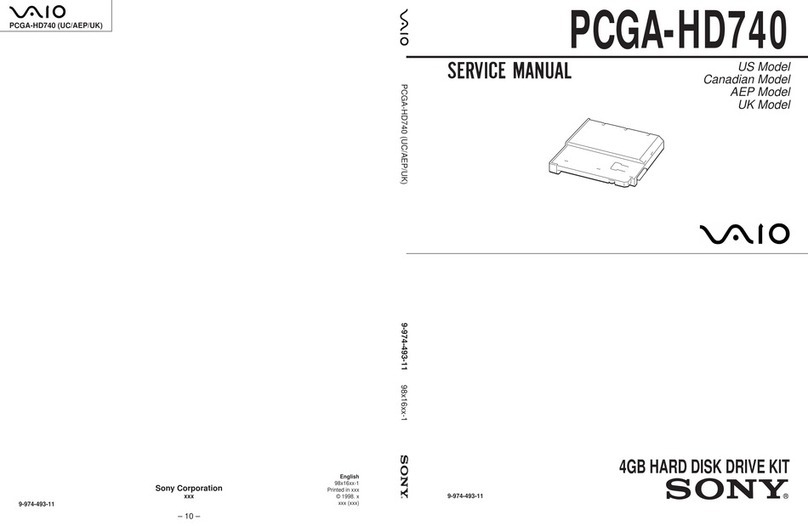
Sony
Sony VAIO PCGA-HD740 Service manual
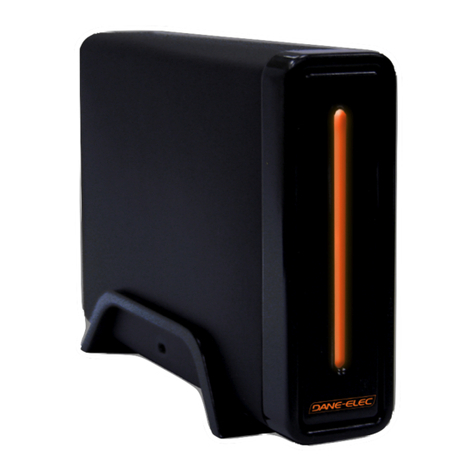
DANE-ELEC
DANE-ELEC SO READY quick start guide
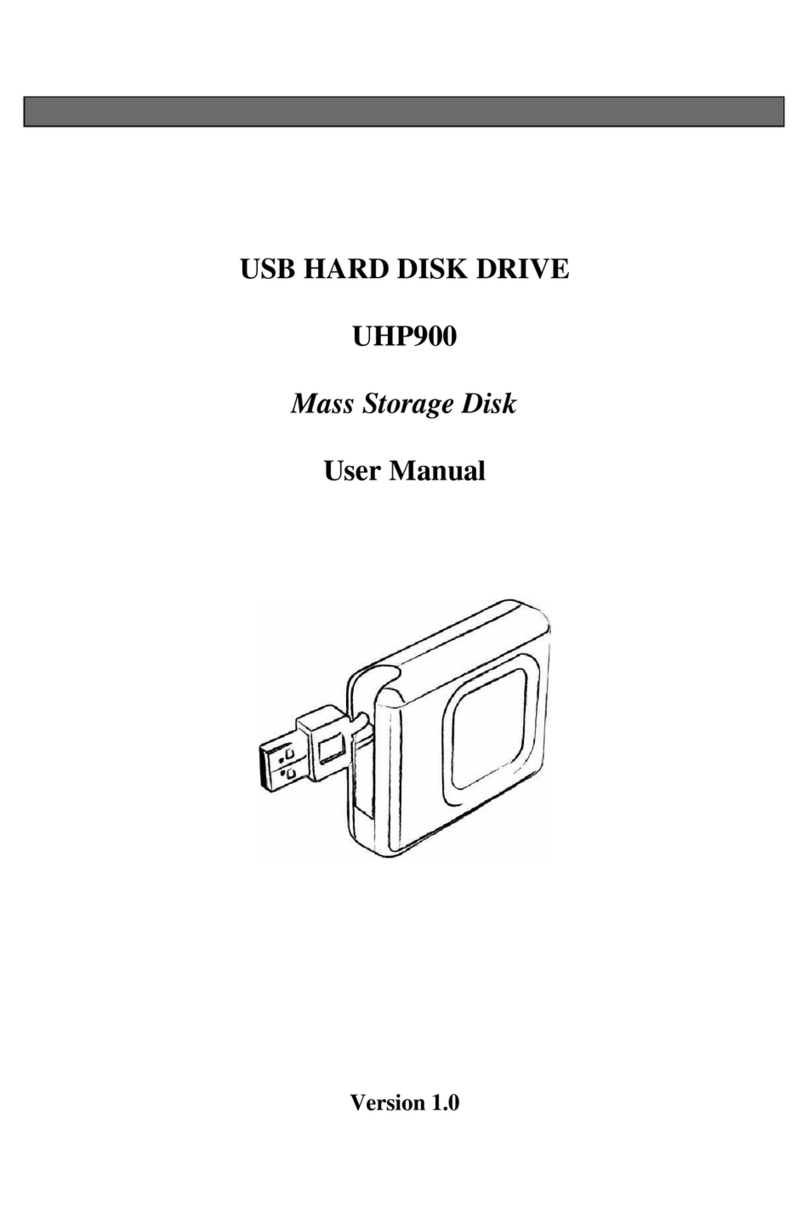
AVC Technology
AVC Technology UHP900 user manual

Quantum
Quantum Scalar i40 user guide

Sun Microsystems
Sun Microsystems StorageTek StreamLine SL8500 Best practices guide
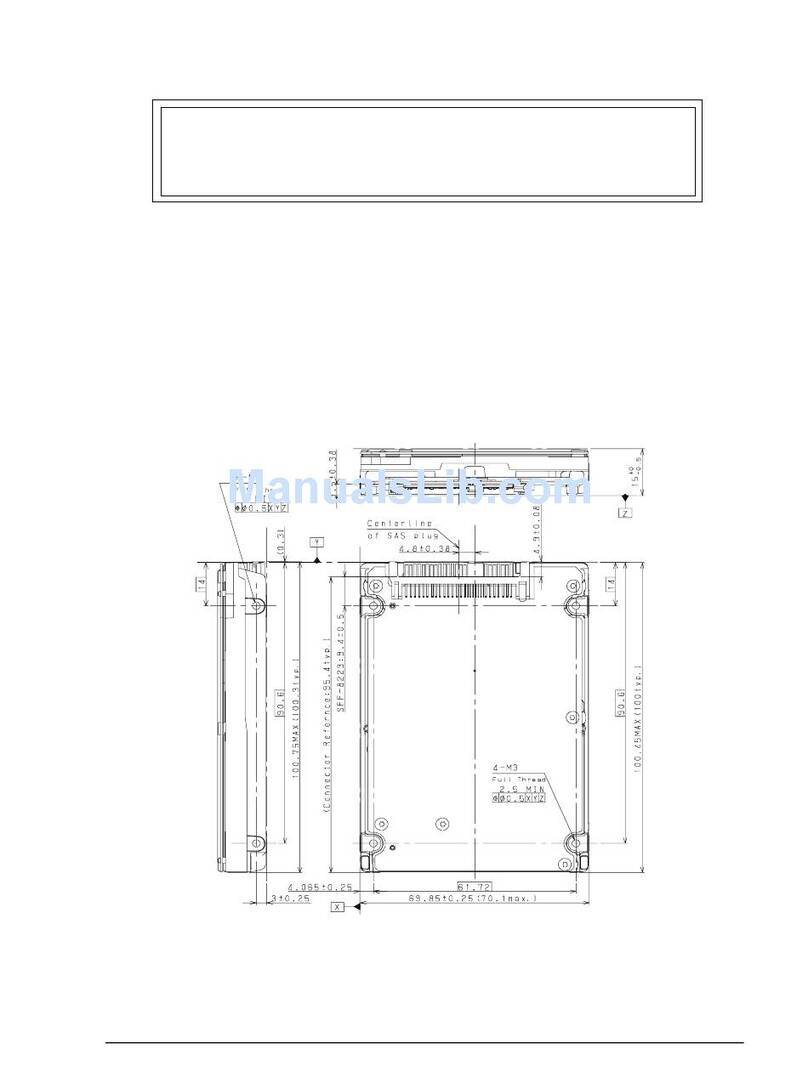
Fujitsu
Fujitsu MAV2036RC - 36.7 GB Hard Drive Installation requirements
